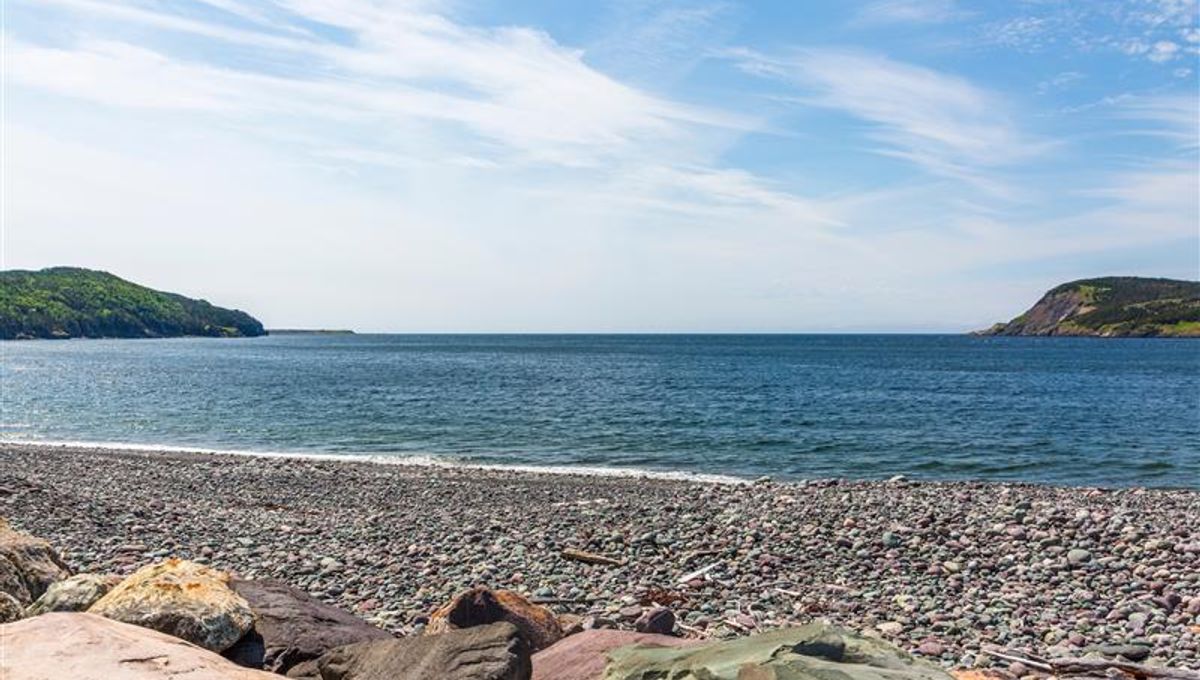
Perplexing white blobs have been washing up on the shores of Newfoundland, Canada, in recent months, and one team of scientists that investigated them says that some contain a mix of synthetic rubber and industrial adhesive. The Canadian government is also doing its own testing but doesn’t seem ready to draw conclusions at this point.
The government agency investigating the mystery masses – Environment and Climate Change Canada (ECCC) – was first informed of their presence on September 7, agency spokesperson Samantha Bayard told CBS News in mid-October, with environmental emergency officers sent out to collect samples.
At the time, Bayard said their preliminary analysis indicated that they could be plant-based, but more testing was needed to be sure. “To date, ECCC has conducted several aerial, underwater and manual surveys of the beaches and shorelines in the area to determine the extent of the substance, what it is and its potential source,” Bayard explained.
“I’ve lived here for 67 years and I’ve never seen anything like this, never,” Patrick’s Cove resident Dave McGrath told the Guardian at the time. “They sent the Coast Guard over and I asked them how bad it was. They told me they had 46 km [28 miles] of coastline littered with this stuff and had no idea what it was.”
A team from Memorial University has analyzed some samples and come to their own conclusions. Blobs were gathered from Placentia Bay by Dr Hilary Corlett, an Assistant Professor in the Earth Sciences department, and sent off for analysis to Dr Chris Kozak, a Professor in the Chemistry department, and his team of graduate students. Thus began “Project Unknown Glob“.
“I’ve definitely heard several theories. I’ve had some reasonable ones and some really out there ones,” Kozak told CBC.
“The first thing I did was poke it and smell it,” Kozak told the Guardian. “By poking it, we could tell it was definitely rubbery, like overworked bread dough. We suspected it was an elastomer polymer. And the smell coming off was a bit like walking through the solvent aisle in your hardware store.”
Kozak and his team tested their blob samples to see what elements they were made of. Nitrogen and sulfur appeared to be absent, ruling out polyurethane or materials of a natural origin. Infrared spectroscopy initially indicated that their blob samples could contain the adhesive polyvinyl acetate (PVA), and mass spectrometry testing suggested that they could also contain synthetic rubber.
“When we look at the smaller components, that is consistent with PVA but also with synthetic latex rubber. So this is a mixture of synthetic isoprene and butyl rubber with PVA,” Kozak told CBC.
“I reached out to my contacts at CBC in St John’s once I had firm evidence in hand. Some people reach out and provide their own opinions. The media interview and report what people tell them. Sometimes this leads to mixed messages,” Kozak wrote in a post on X (Twitter), explaining in another post that “other ‘blobs’ may be from different materials. I still have people telling me they are ambergris or tree rubber. Their samples may be, mine were not.”
Environment Canada recently told the BBC that it “does not share hypotheses on the identity or origins of a substance undergoing testing, nor is it in a position to validate or substantiate the theories or findings of others.”
In other stinky sea blob news, smelly balls that washed up on beaches in Sydney, Australia have recently been examined, revealing the disgusting secrets within.
Source Link: Weird Rubbery White Blobs Wash Up On Canadian Shores – But What Are They?